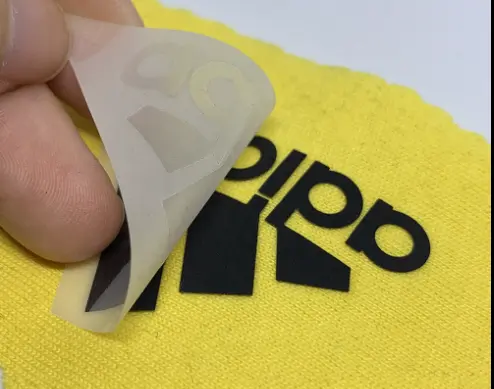Advantages of Silicone Heat Transfer Printing in Garment Branding
In the world of fashion and apparel, branding is crucial. A well-designed logo or trademark can significantly enhance a brand’s identity. One effective method for applying these designs is through **silicone heat transfer printing**. This technique offers numerous advantages that make it an ideal choice for clothing manufacturers and designers. This article explores the benefits of using silicone in heat transfer printing, particularly in the context of garment branding.
### Understanding Silicone Heat Transfer Printing
**Silicone heat transfer printing** involves using silicone-based inks to transfer designs onto fabric. The process utilizes heat and pressure to bond the silicone ink with the textile, resulting in a durable and vibrant print. This method has gained popularity due to its unique properties and advantages over traditional printing techniques.
### Key Advantages of Silicone Heat Transfer Printing
1. **Durability and Longevity**
– Silicone prints are known for their exceptional durability. Unlike other inks, silicone is resistant to fading, cracking, and peeling, ensuring that the printed designs maintain their quality over time. This longevity is particularly beneficial for clothing items that undergo frequent washing and wear[2][5].
2. **High Elasticity**
– One of the standout features of silicone is its elasticity. When used in heat transfer printing, silicone can stretch and move with the fabric without losing its shape or integrity. This characteristic makes it ideal for activewear and fitted clothing, where flexibility is essential[1][4].
3. **Soft Feel**
– Silicone heat transfers provide a soft hand feel that integrates seamlessly with the fabric. Unlike some traditional printing methods that can feel stiff or heavy, silicone prints maintain a lightweight and comfortable texture, enhancing the overall wearability of the garment[1][5].
4. **Vibrant Colors and Detail**
– Silicone inks allow for intricate designs and vibrant colors. The ability to achieve high-resolution prints means that logos and trademarks can be reproduced with precision, making them stand out on apparel[2][8]. This is especially important for brands looking to make a strong visual impact.
5. **Environmental Considerations**
– Many silicone inks are environmentally friendly, containing fewer harmful chemicals compared to traditional inks. This eco-friendly aspect aligns with the growing consumer demand for sustainable fashion practices, making silicone heat transfer printing a responsible choice for brands focused on reducing their environmental footprint[2][6].
6. **Versatility Across Fabrics**
– Silicone heat transfer printing is compatible with a wide range of fabrics, including cotton, polyester, blends, and even some synthetic materials. This versatility allows brands to apply their logos on various clothing types without worrying about compatibility issues[4][9].
7. **Cost-Effectiveness for Small Batches**
– For small businesses or brands launching limited collections, silicone heat transfer printing offers a cost-effective solution. Unlike screen printing, which often requires large minimum orders and extensive setup costs, heat transfer printing allows for smaller runs without compromising quality[2][8].
8. **Ease of Application**
– The application process for silicone heat transfers is straightforward. With minimal equipment required—typically just a heat press—brands can easily produce high-quality prints in-house or through third-party services[5][9]. This ease of use is particularly advantageous for startups or individual designers.

### Challenges and Considerations
While there are many advantages to using silicone heat transfer printing for garment branding, there are also some challenges to consider:
1. **Initial Setup Costs**
– Although the ongoing costs can be lower compared to other methods, the initial investment in quality silicone inks and a reliable heat press can be significant.
2. **Technical Skill Requirement**
– Achieving optimal results may require some technical skill and practice to ensure proper temperature and pressure settings during application.
3. **Limited Color Range**
– While silicone inks are vibrant, they may have limitations in color mixing compared to other inks like plastisol or water-based inks.
### Conclusion
Silicone heat transfer printing presents numerous advantages for garment branding through its durability, elasticity, soft feel, vibrant colors, and environmental friendliness. As brands continue to seek innovative ways to enhance their identity while maintaining quality and sustainability, this method stands out as a leading choice in the apparel industry.
By leveraging these benefits, companies can create eye-catching designs that resonate with consumers while ensuring their logos remain intact through countless washes and wears. As the fashion landscape evolves, embracing techniques like silicone heat transfer printing will be essential for brands aiming to stay competitive and relevant in a crowded marketplace.
In summary, whether you are a small business owner or a large apparel manufacturer, considering silicone heat transfer printing could be a game-changer for your branding strategy. With its myriad benefits tailored to meet modern consumer demands, this technique not only enhances product appeal but also aligns with sustainable practices that today’s consumers value highly.
Citations:
[1] https://patents.google.com/patent/CN103044925B/en
[2] https://dtfsheet.com/blogs/blog/advantages-of-custom-heat-transfers
[3] https://huggingface.co/charent/ChatLM-mini-Chinese/commit/8797a7e2145bcf5a8f1227054445c98e77c5c142.diff?file=tokenizer.json
[4] https://www.sheenthermal.com/article-show-27-40.html
[5] https://www.deconetwork.com/what-is-heat-transfer-printing/
[6] https://patents.google.com/patent/CN203838973U/zh
[7] https://www.linkedin.com/pulse/concave-convex-silica-gel-heat-transfer-printing-afuif
[8] https://archup.net/what-are-the-advantages-and-disadvantages-of-heat-transfer-printing/
[9] https://www.visionsub.com/heat-transfer-paper-vs-other-printing-methods/

